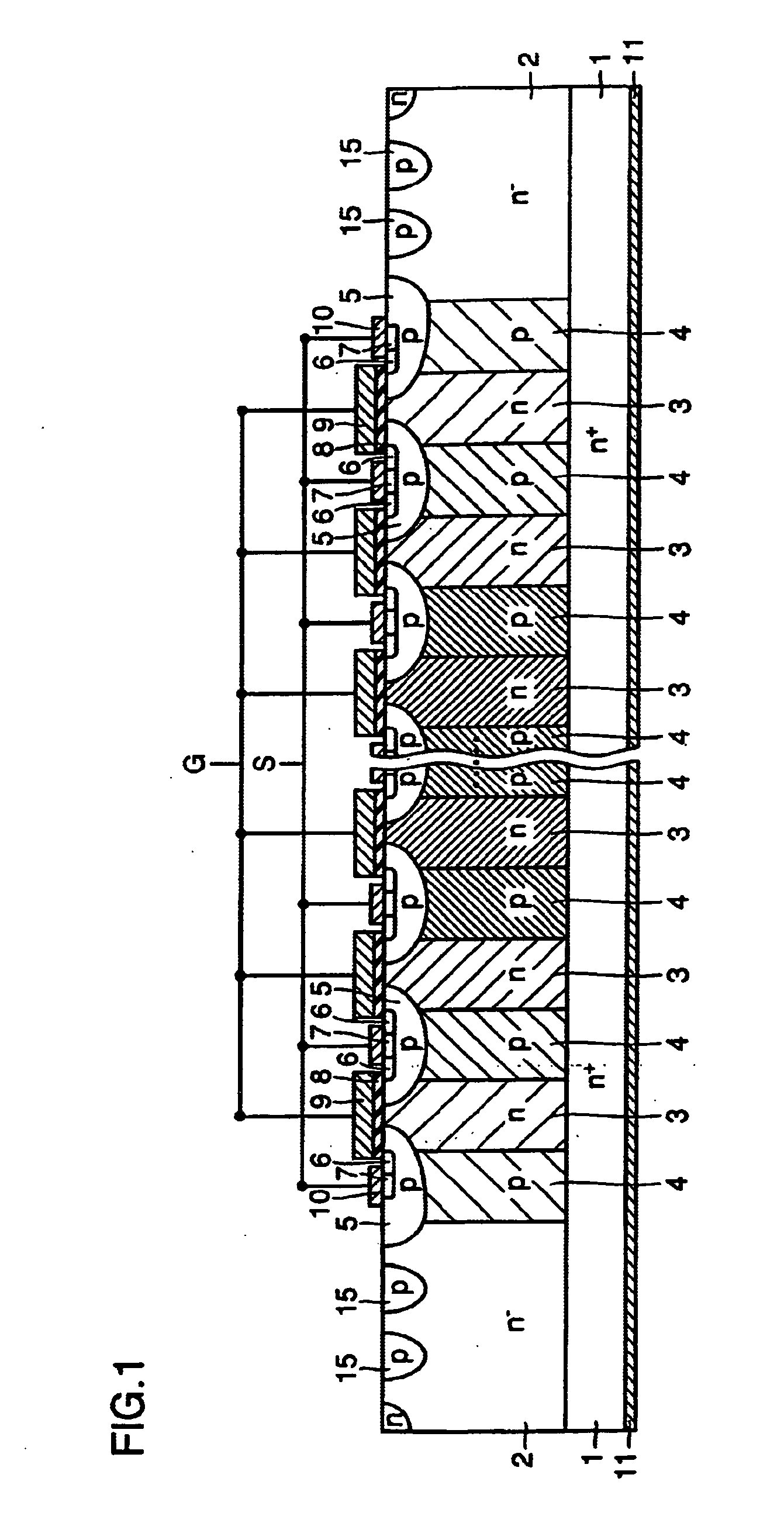Semiconductor device and manufacturing method for the same
a semiconductor and semiconductor technology, applied in the field of semiconductor devices, can solve the problems of large drop in inability to improve the trade-off relationship between the main withstand voltage and the on resistance, and difficulty in implementation
- Summary
- Abstract
- Description
- Claims
- Application Information
AI Technical Summary
Benefits of technology
Problems solved by technology
Method used
Image
Examples
seventh and eighth embodiments
[0244] In the pn-repeating structure in the buried multiple epitaxial layers described so far, a plurality of (for example, three) p-type impurity regions 4 a that form layers in the depth direction of the semiconductor substrate is integrated as shown in FIG. 7 so as to form p-type impurity regions 4 making up the pn-repeating structure. In addition, a plurality of (for example, three) n-type impurity regions 3 a that form layers in the depth direction of the semiconductor substrate is integrated so as to form n-type drift regions 3 making up the pn-repeating structure. Therefore, each of p-type impurity regions 4 and n-type impurity regions 3 has an impurity concentration distribution that periodically changes in the depth direction of the substrate.
[0245] An average impurity concentration of each of the plurality of p-type impurity regions 4 is substantially the same and an average impurity concentration of each of the plurality of n-type drift regions 3 is also substantially th...
ninth to twelfth embodiments
[0252] Next, the structure wherein the present invention is applied to a diode instead of a MOS-FET is described in the ninth to twelfth embodiments.
[0253] The configurations wherein the MOS-FETs in FIGS. 1, 6 and 9 are replaced with diodes are shown in FIGS. 10, 11 and 12 as the ninth, tenth and eleventh embodiments, respectively.
[0254] In reference to FIGS. 10 to 12, a p-type impurity region 21 is formed on the first main surface side of the entirety of the pn-repeating structure so as to be electrically connected to an anode electrode 22.
[0255] Here, the other parts of the configuration of FIG. 10 are approximately the same as in the configuration shown in FIG. 1, the other parts of the configuration of FIG. 11 are approximately the same as in the configuration shown in FIG. 6 and the other parts of the configuration of FIG. 12 are approximately the same as in the configuration shown in FIG. 9 and, therefore, the same symbols are attached to the same members, of which the desc...
thirteenth to sixteenth embodiments
[0261] Next, the structure that is a diode structure, as the above, and wherein the present invention is applied to a diode of which the upper portion has a Schottky junction is described in the thirteenth to sixteenth embodiments.
[0262] The configurations wherein the diodes in FIGS. 10, 11, 12 and 13 are replaced with Schottky diodes are shown in FIGS. 14, 15, 16 and 17 as the thirteenth, fourteenth, fifteenth and sixteenth embodiments, respectively.
[0263] In reference to FIGS. 14 to 17, an anode electrode 22 made of metal is electrically connected to the first main surface of the semiconductor substrate and a metal silicide layer 21a is formed on this connection portion.
[0264] Here, the other parts of the configuration of FIG. 14 are approximately the same as in the configuration shown in FIG. 10, the other parts of the configuration of FIG. 15 are approximately the same as in the configuration shown in FIG. 11, the other parts of the configuration of FIG. 16 are approximately ...
PUM
 Login to View More
Login to View More Abstract
Description
Claims
Application Information
 Login to View More
Login to View More - R&D
- Intellectual Property
- Life Sciences
- Materials
- Tech Scout
- Unparalleled Data Quality
- Higher Quality Content
- 60% Fewer Hallucinations
Browse by: Latest US Patents, China's latest patents, Technical Efficacy Thesaurus, Application Domain, Technology Topic, Popular Technical Reports.
© 2025 PatSnap. All rights reserved.Legal|Privacy policy|Modern Slavery Act Transparency Statement|Sitemap|About US| Contact US: help@patsnap.com



